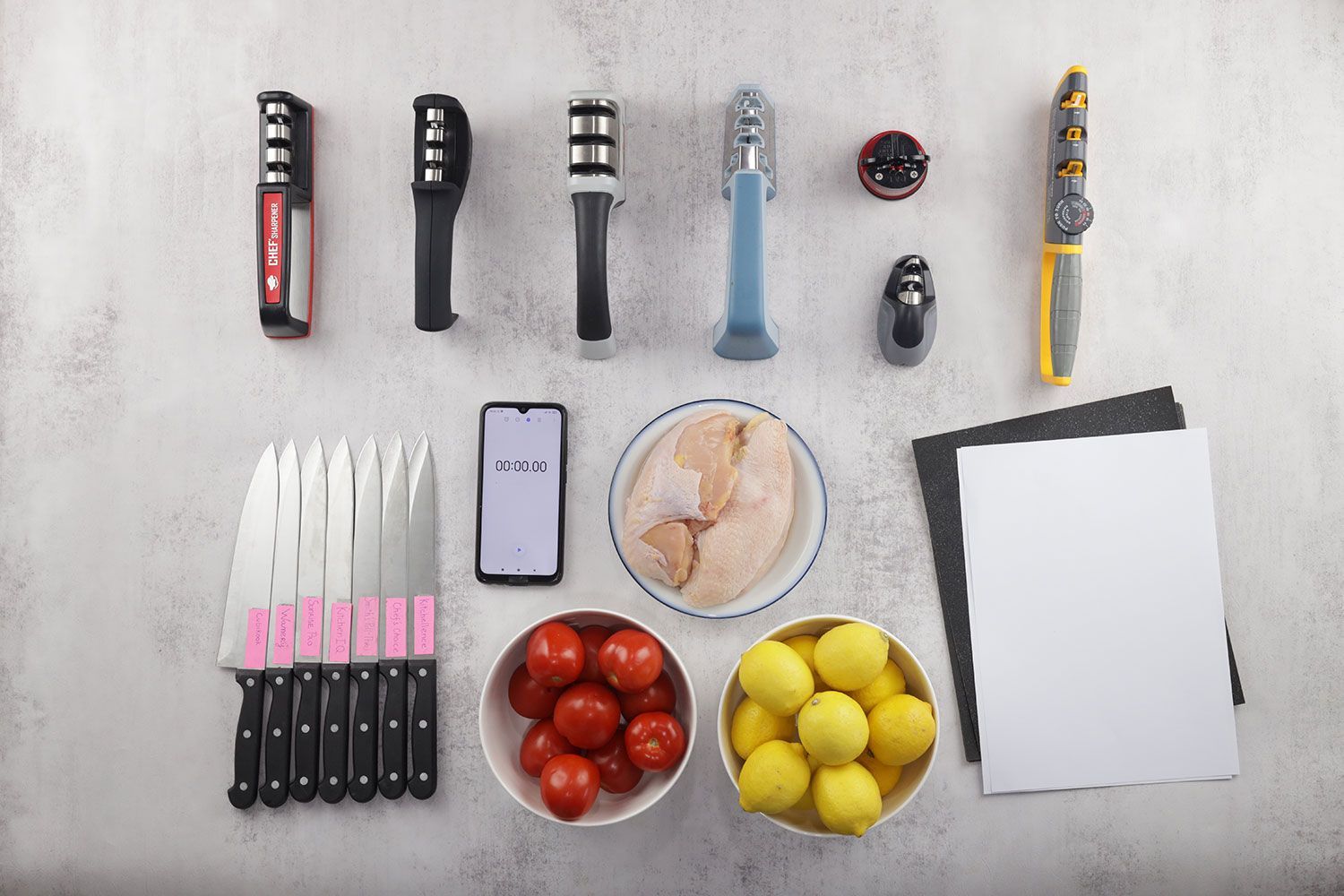Our recommendations are made independently. We may receive commissions from purchases made via our links.
Edge Smoothness for Manual Knife Sharpeners
After sharpening, we check the edge of the knife for deformities and rate the edge smoothness achieved by each handheld sharpener.
This test is part of How We Test Manual Knife Sharpeners v1.1
Sharpness alone isn’t the only indicator of a good sharpening device: Toothy or chipped edges perform differently than smooth ones. Here we discuss why we want a smooth edge and how we test handheld sharpeners for it.
Why Edge Smoothness Matters
Edge smoothness refers to the overall consistency of the edge angle from the knife’s tip to its heel. It is assessed by the uniformity in thickness and the lack of burrs, chips, and dents on the edge after sharpening.
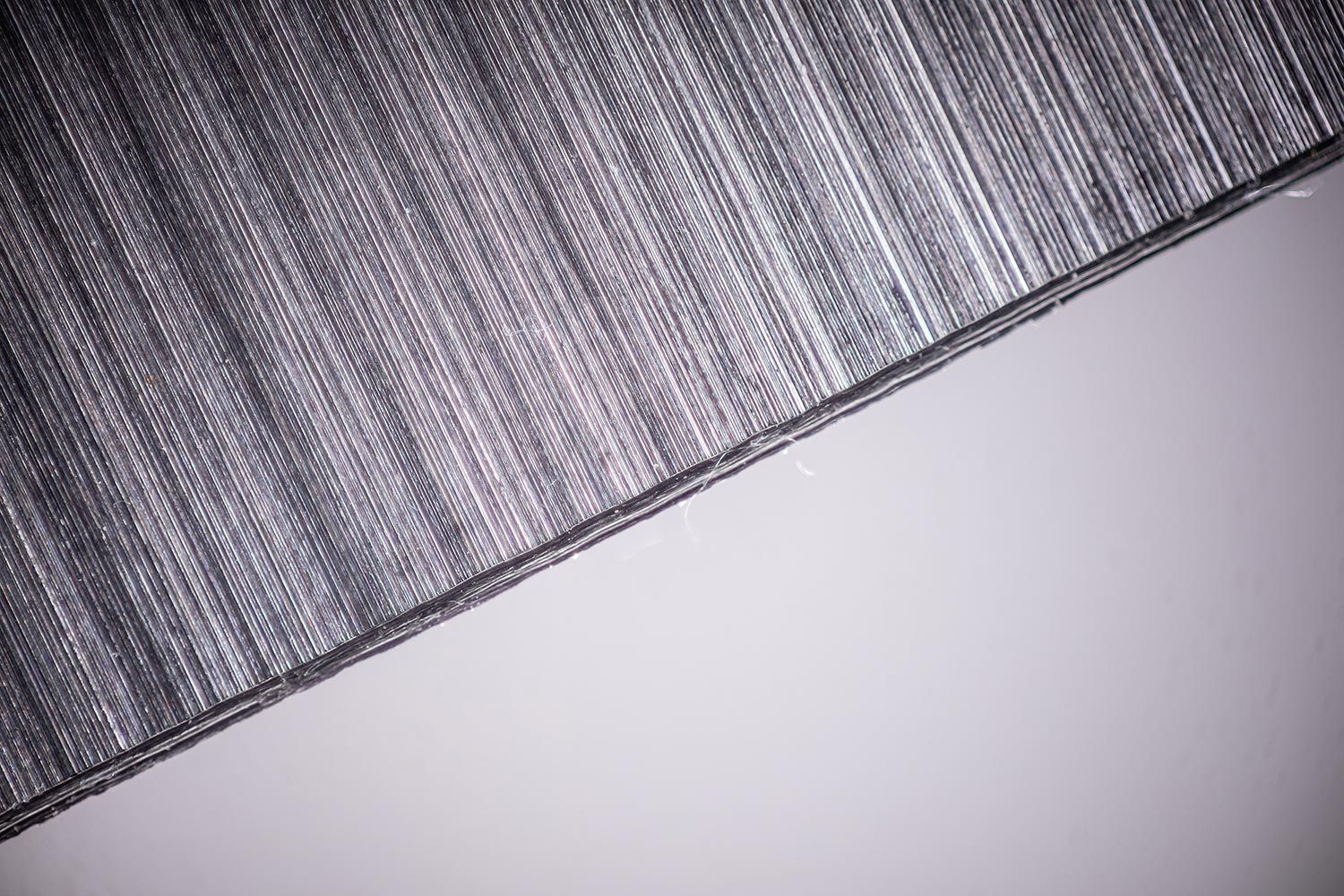
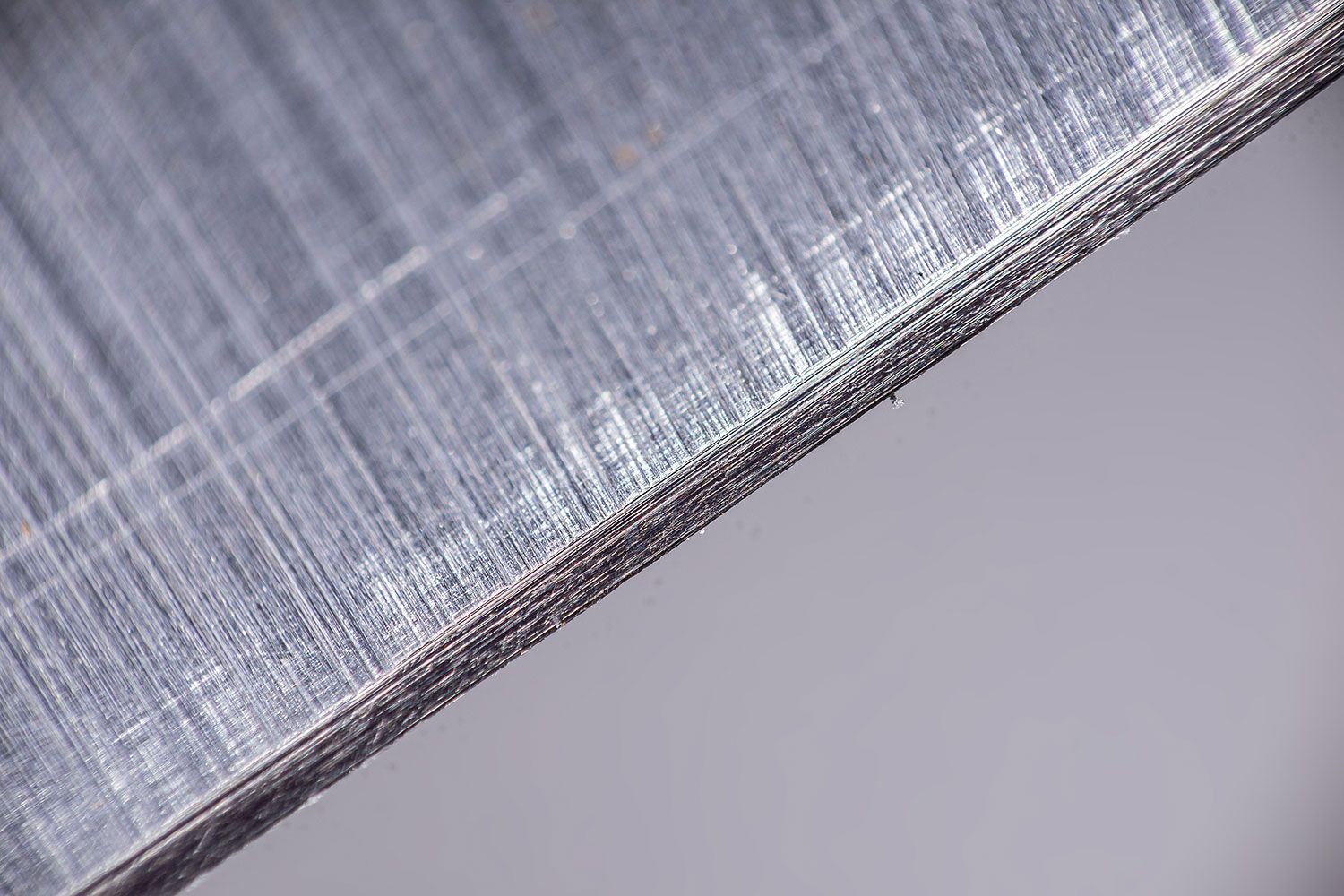
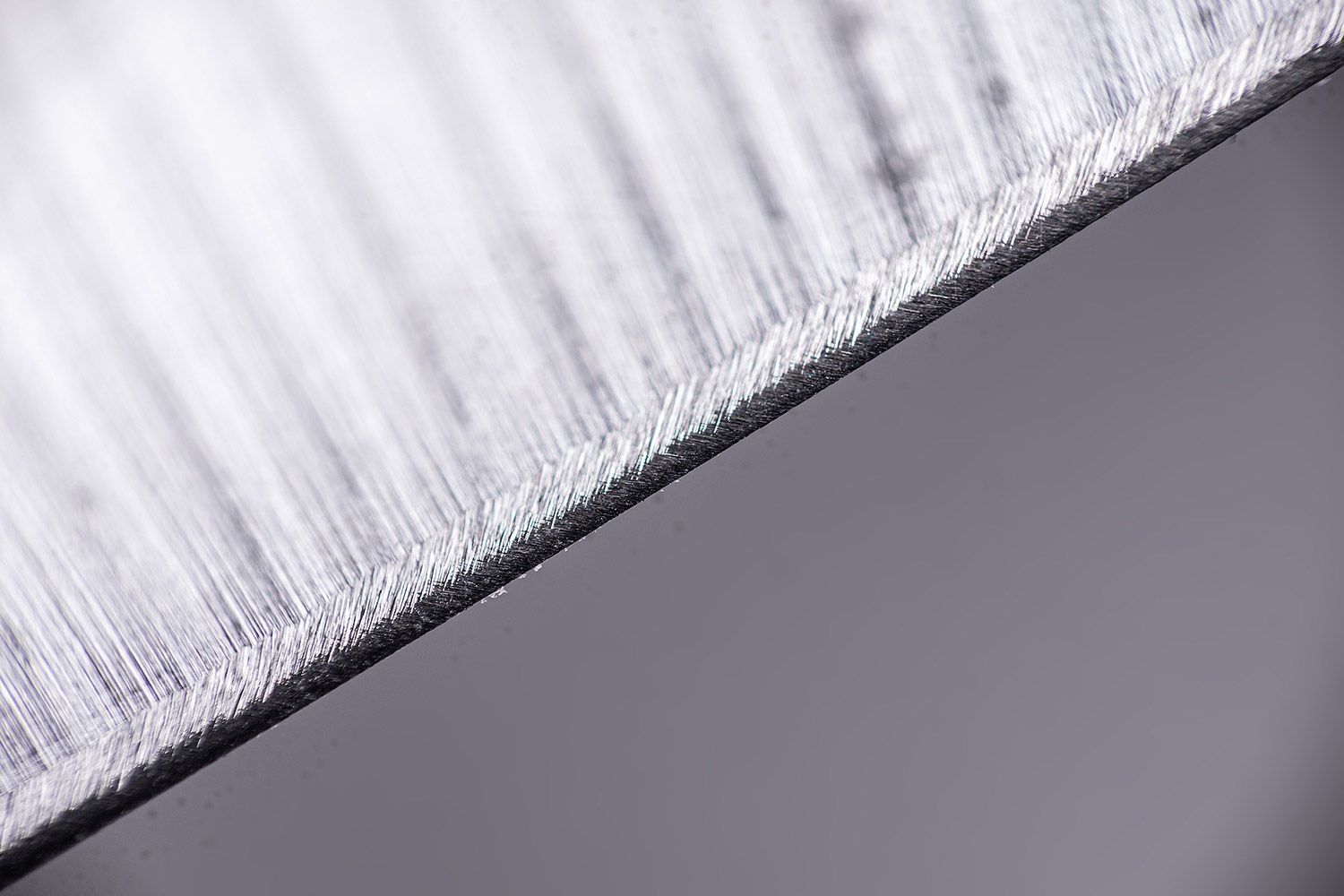
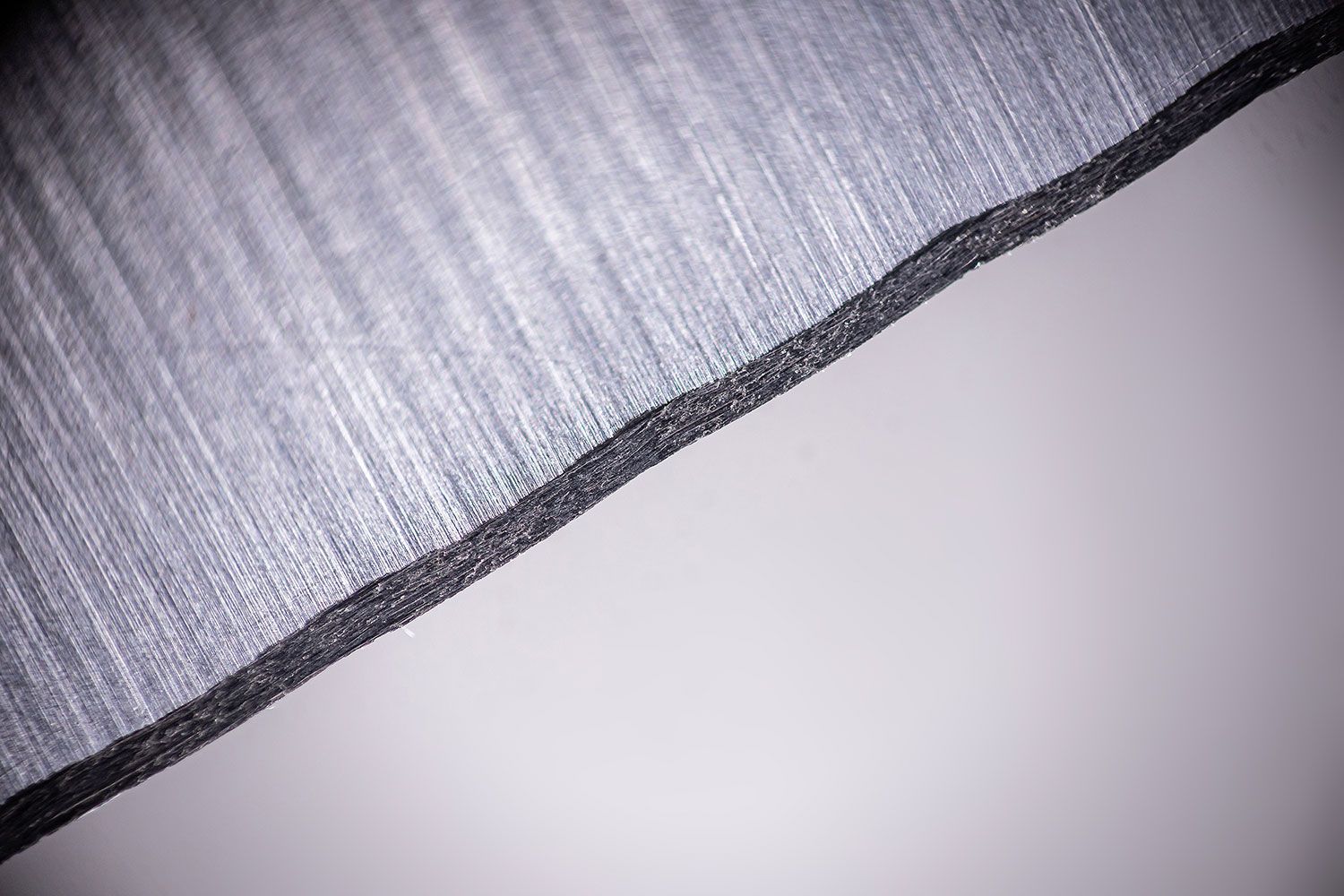
A smooth and even knife edge isn’t necessarily sharper, but it produces swift, clean cuts, whereas one that’s uneven tends to tear the food. A uniform edge also reduces the chance of chipping by applying pressure evenly across its length, thus improving edge retention compared to rough or toothy edges.
Especially during food preparation, you don’t want deformities on your knife edge. Metal burrs or chips that fall off and stick to your food can potentially cause digestive and other health problems.
Edge smoothness makes up 20% of the overall score for Performance for manual knife sharpeners.
Factors That Affect Edge Smoothness
Coarser abrasives can fix major burrs and chips, thus reducing visible deformities. However, only fine sharpening materials can smooth the metal out while straightening the edge. As a result, devices that have multiple abrasive levels tend to perform better than those with fewer levels.
The design of the sharpening slots can also make or break the knife edge that goes through it. Occasionally you’ll find one with rods or discs that are too thick or placed too far apart. If you’re not paying attention or have shaky hands, you may end up with a wavy edge out of such a sharpener.
Edge smoothness also requires a sturdy working section. Sharpeners like the Smith’s which can adjust to different edge angles tend to be less stable. It’s the inevitable compromise for versatility. Since the abrasive rods can jostle slightly, they may create dents and waves on the knife edge, practically destroying it.
An inspection of the sharpener is not enough to conclude how consistent it would be. We decided to examine each knife edge after sharpening to see how the device performs.
Our Edge Smoothness Test
The primary edge created by a manual sharpening device is hard to see clearly. We put each knife under bright LED light to inspect the edge after sharpening. Then, we take photos of the edge using a magnifying lens (x2), then zoom the photos in by 23 times, and inspect the photos for deformities.
‘Deformities’ refers to dents, grooves, chips, cracks, or burrs detected along the knife’s edge after sharpening.
What’s New in V1.1
In the first version of the test, we waited until sharpness has maxed out on the test knife to determine the edge smoothness. However, it’s not often that home cook would sharpen their knife to that sharpness level — most devices come with instructions where you’re expected to spend no more than a minute or two sharpening a knife. As such, we now inspect the edge right after it reaches the lemon-cutting level, as it better reflects the usual state of the knife after sharpening.
Equipment
- Sharpening device
- 8-inch chef’s knife
- Magnifying lens (x2)
- LED light
- Camera
Steps
This is conducted right after the Time to Reach Workable Sharpness test, where we blunt a knife and sharpen it until it can cut through a lemon swiftly.
We give the knife edge a visual inspection at a 10-inch (25-centimeter) distance and note whether we found any imperfections or deformities.
Photos of the knife edge are then taken using a magnifying lens (x2), then zoomed in 23 times the original size.
We use the photos to find and note the number of imperfections on the knife edge.
Scoring
We rate the smoothness of the knife edge on a scale of 0 to 10. A score of 1 indicates many deformities along the knife edge, while a score of 10 indicates a straight, smooth, near-perfect edge with minimal deformities.

